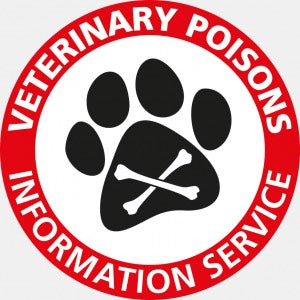
Top 5 Toxin Diagnosis Techniques Every Vet Student Must Learn
Share
Introduction
Ever wondered how vets figure out what made a pet sick? Detecting toxins is a crucial skill for veterinarians because it helps them treat animals effectively. Here are the top five diagnostic techniques every vet student should master to identify toxic substances and why they are so important.
1. Blood Tests
Blood tests act as a vital diagnostic tool, giving vets insight into a pet’s internal health. By analyzing blood samples, vets can detect signs of organ damage, infections, or exposure to toxic substances. Understanding how to interpret blood test results is essential for diagnosing and treating poisoning cases effectively.
2. Urine Tests
Urine tests provide another valuable method for detecting toxins. Substances like antifreeze, heavy metals, and certain drugs often leave traces in urine. Vet students learn how to properly collect, analyze, and interpret urine samples to help identify potential toxic exposures and guide treatment.
3. X-rays and Imaging
X-rays and other imaging techniques, such as ultrasounds, allow vets to see inside a pet’s body. These images can reveal if an animal has swallowed something toxic, has internal damage, or if foreign objects are causing distress. Mastering imaging techniques helps vet students make quicker, more accurate diagnoses.
4. Toxicology Screening
Toxicology screening involves testing blood, urine, or tissue samples for specific poisons. This method is essential for detecting substances like rat poison, insecticides, or certain medications that could be harmful to pets. Knowing how to conduct and interpret toxicology tests ensures that vets can pinpoint the exact cause of poisoning and provide the best treatment.
5. Observation and Owner Interviews
Sometimes, the best clues come from simply observing the pet and speaking with the owner. Symptoms like vomiting, lethargy, tremors, or unusual behavior can indicate poisoning. Asking the right questions about the pet’s environment, diet, and recent activities helps vets piece together crucial details for an accurate diagnosis.
Conclusion
Mastering these diagnostic techniques is essential for any aspiring vet. They not only improve the accuracy of diagnosing toxin-related illnesses but also help save lives. Want to learn more and access helpful veterinary tools? Visit Vet Smart Notes.com for expert resources and insights to enhance your veterinary skills!
FAQ:
1. Why are blood tests important for diagnosing pet illnesses? Blood tests help vets assess organ function, detect infections, and identify toxins in the bloodstream, making them crucial for diagnosing and treating sick pets.
2. How do urine tests help vets detect poisoning? Urine tests reveal the presence of toxic substances, such as antifreeze or heavy metals, aiding in quick and accurate diagnoses.
3. What do X-rays and imaging reveal? X-rays and ultrasounds provide internal images that can show swallowed objects, organ damage, or other abnormalities linked to poisoning.
4. What is a toxicology screening, and why is it important? Toxicology tests identify specific poisons in blood, urine, or tissue samples, helping vets determine the best course of treatment.
5. How do vets use observation and owner interviews for diagnosis? By observing symptoms and asking detailed questions about the pet’s behavior and environment, vets can gather important clues to identify potential toxic exposures more effectively.
